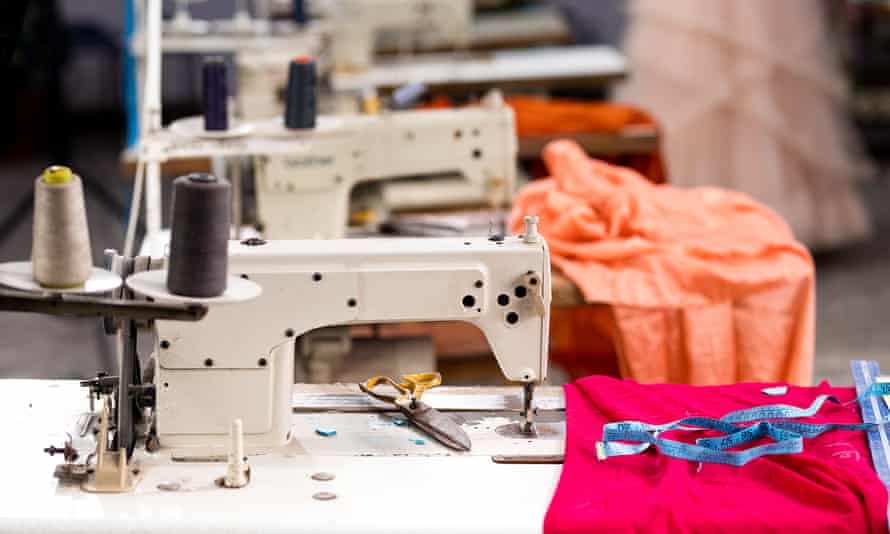It seems as if it’s never been cheaper to kit ourselves out with a new wardrobe, but our love of fashion comes with a hefty environmental price tag, as according to the World Bank, the industry produces 10% of global greenhouse gas emissions every year.
To try to tackle the problem, the UN’s Fashion Industry Charter for Climate Action, which launched in 2018 and was renewed in 2021 at Cop26, set the goal of net zero emissions by 2050. But when Dr Chamu Kuppuswamy, a senior lecturer at the University of Hertfordshire School of Law, read it, she noticed what was missing.
“There’s not a single South Asian fashion house that is a signatory of the charter. The sari industry is worth billions of dollars. So if we want to look at reducing emissions, it’s really important to take into account South Asian textiles and fabrics.”
Brands that have signed the charter are committed to supporting the implementation of its principles in their organisations.
An international lawyer by training, Kuppuswamy’s research for the university’s Centre for Climate Change Research, explores the intersection between the law, climate change, sustainability and the environment.
At a country level, South Asian fashion is also ignored, says Kuppuswamy, who has an interest in textile waste. India’s emissions targets for 2030 don’t mention fashion, for instance. “There’s a blind spot,” she says. “If the fashion charter doesn’t shine that light on Indian fashion, that part of the emissions won’t be regulated for.”
One area of the clothing industry that particularly piqued her interest related to costumes and performance arts. So she embarked on an eight-month project, funded by Arts Council England, to develop the Fashion Charter for South Asian Arts.
Focusing on UK-based artists, performers and retailers who operate within a global network, and drawing on her own experience as a South Asian classical dance performer, she researched consumption and design habits. For example, how often costumes are worn, the materials they are made from and so on.
Kuppuswamy points out that fashion is largely unregulated when it comes to textile use and sustainability – existing fashion law, both in the UK and India, is business oriented and focused on areas such as copyright and design.
In India, she says, one law has indirectly helped reduce textile waste. “In 2014 legislation came in for the protection of street recycling vendors, which indirectly protected the sale of recycled clothing as well. It provides clothing security for lots of people, but it also encourages longevity of fabrics.”

She argues that governments need to strengthen laws around the use of sustainable materials, as well as carbon emissions in the textile industry. “We need policy from government and laws that make fashion commitments more binding,” she says. “If we are to reach the targets, we need accountability frameworks that we can use the courts to enforce. Voluntary commitments are simply not enough.”
As part of her work on the Fashion Charter for South Asian Arts, she developed insights that are also applicable to those working in the wider fashion industry. “Costume is a niche area, but the base material is much more widely used,” she says. “More discussion around sustainability in this area will have a trickle-down effect on ordinary fashion.”
Here are three of her key findings and recommendations:
Design flexible clothes to reduce over-buying
Kuppuswamy spoke to several artists and performers who had noticed a trend for a growing number of outfits for each performance. “There used to be two costumes used for every performance; now, it is four or five. One dancer mentioned that five years ago, her peers would switch between two or three costumes – now, partly because of Instagram, they feel the need to have new things every week.”
To help reduce this growing overconsumption – something with clear parallels in other parts of the fashion industry – costume designers need to design flexible clothes. “Think about and offer choices that allow for more mixing and matching,” she says. “Make choices that allow for better use over five years, for example through changing body shapes. To do this, designers need to spend time with the customer – talk about their aspirations for the costume.”
Increase knowledge sharing
There is some “fantastic work” on sustainability being done by elite designers in cities such as New Delhi, but it hasn’t yet percolated down to dance schools and regional designer tailors. “So we now have the expensive cutting edge, and separately, the designer tailors. There should be more interaction between the two,” says Kuppuswamy. She hopes to increase cooperation and knowledge sharing using the Fashion Charter for South Asian Arts.
Use a greater diversity of materials
Kuppuswamy says costume designers need to be more willing to work with different materials. Many, for instance, refuse to work with ethically made silk because they cannot guarantee the desired effect will be achieved with the finished garment.
At the same time, growing numbers of consumers are choosing cheaper, synthetic materials such as polyester to make items. She adds it’s important not to forget ethical labour practices and fair trade, at the moment, saying too few designers consider this.
Find out more about the game changing multidisciplinary research at Herts, how it is deepening understanding of climate change and helping to tackle the environmental emergency.

